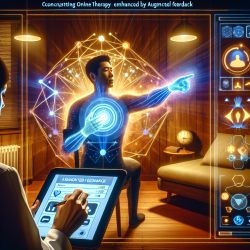Introduction
Recent advancements in cochlear implantation have revolutionized the way we approach hearing restoration. The study "Conversations in Cochlear Implantation: The Inner Ear Therapy of Today" provides valuable insights into the current state and future directions of cochlear implant (CI) technology. This blog post aims to translate these findings into actionable strategies for practitioners seeking to enhance their skills and improve patient outcomes.
Understanding the Current Landscape
The evolution of cochlear implants over the past four decades has been driven by technological, surgical, and healthcare delivery advancements. Modern CIs now cater to a diverse range of indications, promoting language acquisition, literacy, and quality of life improvements for both children and adults with profound sensorineural hearing loss.
Despite these advancements, challenges remain in CI delivery, use, and access. These challenges have spurred research into biomolecular and pharmacological approaches, such as gene augmentation and antisense therapies, which aim to complement or even replace traditional CI devices.
Improving Practitioner Skills
Practitioners can leverage the insights from the research to enhance their skills in several ways:
- Stay Updated: Keep abreast of the latest developments in CI technology and surgical techniques. This includes understanding the physiological constraints of current implants and exploring new strategies for improving sound quality and speech perception.
- Embrace New Indications: The expansion of CI indications, such as single-sided deafness and tinnitus, offers new opportunities for patient care. Practitioners should familiarize themselves with these indications to provide comprehensive treatment options.
- Focus on Outcome Measures: Utilize patient-reported outcome measures like the CIQOL-35 and CIQOL-10 Global to assess the real-world impact of CIs on quality of life. These tools can guide personalized care and inform clinical decision-making.
- Explore Combination Therapies: Consider the potential of combining CIs with emerging biomolecular therapies. This approach could enhance hearing restoration by targeting different aspects of auditory dysfunction.
Encouraging Further Research
While current CI technology offers significant benefits, there is still much to learn and improve. Practitioners are encouraged to engage in or support further research in areas such as:
- Biomolecular Approaches: Investigate the integration of gene and antisense therapies with CIs to address unmet medical needs and improve outcomes for patients with specific genetic mutations.
- Optical Cochlear Implants: Explore the potential of optical cochlear implants, which may offer more precise neural stimulation and improved sound quality.
- Intraoperative Monitoring: Develop and refine intraoperative monitoring techniques to minimize surgical trauma and optimize electrode placement.
Conclusion
The research presented in "Conversations in Cochlear Implantation: The Inner Ear Therapy of Today" highlights the ongoing improvements and challenges in the field of cochlear implantation. By implementing the insights from this research, practitioners can enhance their skills and contribute to the development of next-generation inner ear therapeutics. For those interested in delving deeper into the original research, please follow this link: Conversations in Cochlear Implantation: The Inner Ear Therapy of Today.










